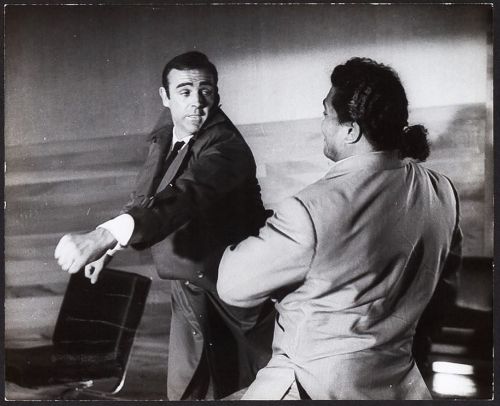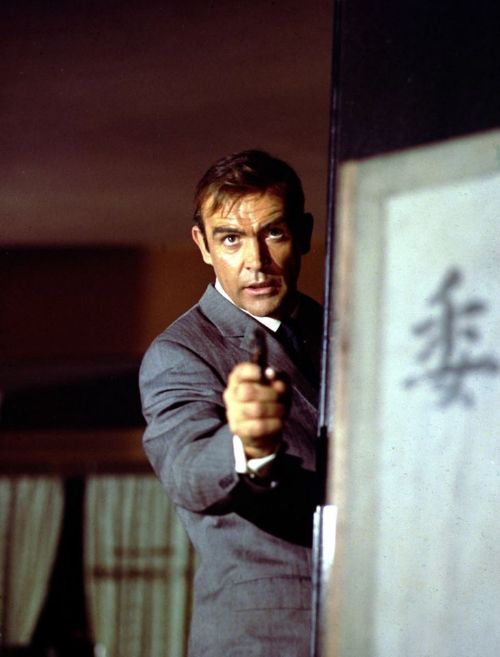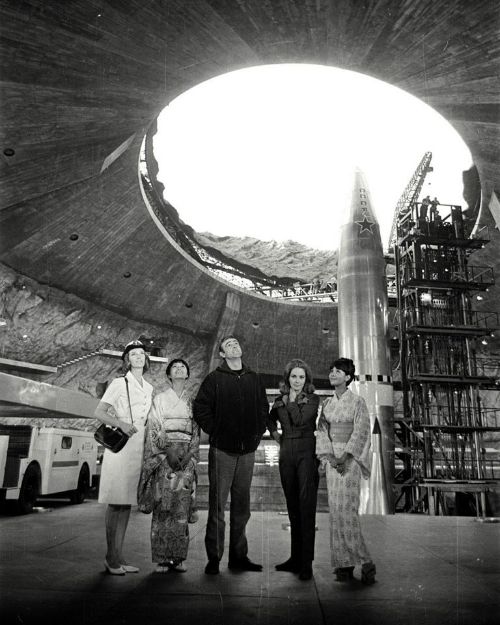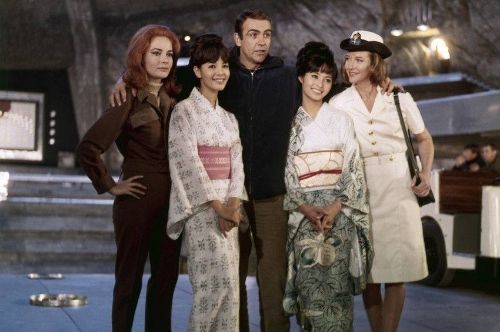“Welcome to Japan, Mr. Bond.” ~Tiger Tanaka (Tetsuro Tamba)
WHAT: You Only Live Twice (1967) 50th Anniversary Screening (in DCP)
WHEN: May 18, 2017: 2 PM & 7:30 PM
WHERE: Pickwick Theatre, Park Ridge, IL
WHAT ELSE: Special Guests: James Bond author Raymond Benson and Ian Fleming Foundation Board Member Colin Clark will introduce the film shortly after 7 PM. We will have the “Model 47 Bell Helicopter” used in the film on display in our theatre lobby.
Doors will open at 6 PM. The first 100 patrons through the door with a ticket will get a chance to tour the James Bond Vehicles Facility in Kankakee, IL (courtesy of the Ian Fleming Foundation). Two winners will be drawn before 7:30 PM. (Each will be able to bring up to three guests.)
Organist Jay Warren performs pre-show music on the Mighty Wurlitzer beginning at 6:30 PM.
HOW MUCH: $10/$8 (advance) or $6 for the 2 PM matinee (feature film only). Advance tickets can be purchased HERE.
You Only Live Twice (1967) is the last of the great James Bond films starring Sean Connery as Agent 007. Though Connery would return for one more (official) adventure four years later in Diamonds Are Forever, YOLT is widely considered to be a superior film. Like many fans of my generation, I grew up watching the Bond movies on television when Chicago’s ABC Channel 7 used to broadcast them. However, the enormous scope of the films are lost in this format. A television, no matter how big, can never capture the spectacle. Last season’s Thunderball was one of the best DCP (digital) restorations we had ever seen at the Pickwick Theatre, and we’re expecting nothing less this time. On May 18, we will proudly present a movie that simply has it all: a space-themed story, gorgeous cinematography, beautiful Bond girls, magnificent sets and music, unforgettable action sequences– and, of course, the best James Bond of them all.
After James Bond (Sean Connery) is assassinated in Hong Kong and buried at sea (in a fabricated death designed to mislead his enemies), 007 is enlisted by British Intelligence to solve a space race mystery. Astronauts are disappearing as they orbit the Earth. The Americans are blaming the Russians and vice versa, but the British believe a third party is involved with the evidence pointing to the Sea of Japan. Bond is sent to Japan where he meets his contact, Aki (Akiko Wakabayashi). Eventually, she leads him to Tiger Tanaka (Tetsuro Tamba), the head of the Japanese secret service. Together, they investigate an industrialist who may be connected to the rocket mystery. Bond soon immerses himself in Japanese culture and takes on a bride as part of his disguise; Kissy Suzuki (Mie Hama) will aid him on the mission. It’s revealed that the terror organization SPECTRE is behind the rocket abductions. With world tensions mounting, 007 must infiltrate SPECTRE’s base inside an extinct volcano. It is here where Bond confronts the man behind the chaos: Ernst Stavro Blofeld (Donald Pleasence).
Originally, On Her Majesty’s Secret Service was to be the next Bond film in the series. However, with a release date already set and Sean Connery’s contract running out, there wasn’t time to find suitable winter locations. Instead, Producers Cubby Broccoli and Harry Saltzman gave the green light for You Only Live Twice, the last novel that Ian Fleming edited himself. The book’s narrative is set in Japan and has Bond seeking revenge on Blofeld for the death of his wife, Tracy. The novel describes a castle by the sea where Bond confronts Dr. Shatterhand (Blofeld) and his “garden of death.” However, during location scouting by helicopter, the filmmakers did not find anything that matched Fleming’s descriptions. They did, however, find a volcanic landscape that gave them an idea; it would shape the storyline for the film to come.
Screenwriter Harold Jack Bloom contributed some story material, but it was novelist and short story writer Roald Dahl who was most responsible for the final screenplay. In fact, Dahl had never written a screenplay before, but he had known Ian Fleming personally. He is best-remembered today for his children’s books such as Charlie and the Chocolate Factory. It was Dahl who contributed some of the best ideas including the outer space element. This was particularly relevant as the film was being made at the height of the space race. Of the original novel, Dahl had said it was “Ian Fleming’s worst book, with no plot in it which would even make a movie.” He further compared it to a travelogue. In this context, it’s understandable that the movie version was radically different. After the world-wide success of Thunderball, audiences would’ve expected something big– not a moody character piece. Additionally, with the possibility of Connery leaving the series, the filmmakers wanted to make the story bigger and not be completely dependent on the actor playing the role. Dahl did maintain some plot points from the novel as well as some of the characters. What he assembled was essentially a reworking of Dr. No, but done on a much larger scale. The story, though over-the-top at times, never becomes camp or cartoonish, as the films would become later in the 1970s and beyond.
Lewis Gilbert was recruited by the producers to direct the film. His most recent credit was 1966’s Alfie starring Michael Caine. Gilbert trusted Dahl and shot basically what he had written with minimal changes. Gilbert’s greatest contribution, however, was bringing in cinematographer Freddie Young– one of the great artists of British cinema. Young had worked on some of the David Lean productions and gave YOLT the same kind of grandeur. As a result, the film is one of the most spectacular-looking in the series. Young’s camera captures the atmosphere and ambience of Japan. The outdoor photography is at times even lyrical. YOLT benefits from many visual flourishes. One of the outstanding images in the film is the overhead, long distance shot of Bond’s rooftop fight at the Kobe Docks. Gilbert would later direct The Spy Who Loved Me (1977), which was Roger Moore’s best outing, and Moonraker (1979), which was not.
In addition to its cinematography, the film benefits from the set design by Ken Adam. His sets are what separate the Bond films from everything else. As a result, a scene that is mostly dialogue-driven, such as Bond’s first encounter with Tiger Tanaka in the underground office, is made visually interesting by the production design. Tanaka’s office is a sparse room suggesting the Japanese penchant for simplicity, but it also has the technological advancements like the copper TV monitors. Adam excelled at incorporating the culture into the design.
But no set (in this film or any other in the series) compares to the volcano base that Ken Adam designed at Pinewood Studios in England. For a million dollars, the filmmakers built a set that was nearly 150 feet tall and featured a working monorail and heliopad. It is here where Blofeld launches his own intruder rocket to intercept the manned spacecraft. It is one of the most impressive designs ever made for a movie, and it remains just as impressive today in an era where filmmakers rely on CG effects. In YOLT, we have an environment that is real and three-dimensional, and this is what makes it extraordinary fifty years later. The underground base is one of the iconic images from the film, and it would be used in the ad campaign leading up to the film’s release on June 13, 1967.
Besides the volcano, YOLT is remembered for one of the most famous props used in the series: “Little Nellie,” the autogyro that Bond flies while surveying the Japanese terrain. Little Nellie was actually a real vehicle invented by former RAF Wing Commander Ken Wallis. As with the famous Jet Pack in Thunderball, the filmmakers decided to borrow this machine for the movie. Ken Adam modified it with the requisite gadgetry. In one of the most exciting sequences in the movie, Bond is pursued in Little Nellie by four Osato SPECTRE helicopters. (One of these models will be on display in the lobby at the Pickwick Theatre.)
James Bond with Little Nellie and her “father,” Q.
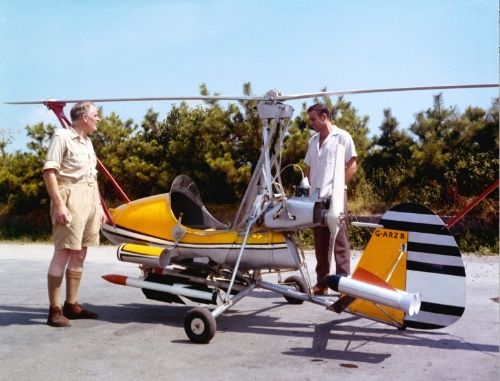
If Ken Adam is the one most responsible for the visual design of the James Bond films, it’s composer John Barry who defined what a Bond score should be like. Barry’s orchestrations are so much a part of the fabric of the series. YOLT offers one of his most memorable and exotic film scores, from Nancy Sinatra’s famous title song to haunting melodies like “Capsule in Space,” “The Wedding,” and the orchestral version of the main title. The song “You Only Live Twice” has influenced many musicians over the decades, most notably Robbie Williams and his “Millennium” track. But nothing comes close to Nancy Sinatra’s original version. If there’s any doubt, try listening to Coldplay’s cover of the song!
You Only Live Twice is one of the most colorful adventure films of the 1960s with everything from space capsules to ninjas to a pool of piranhas. What’s not to like? The raid on the volcano remains one of the most exciting climaxes to any Bond film. The action finale is big and it’s crazy, but it’s never dull (as the films would become in the early Roger Moore era). Most fans will rank YOLT in the Top 10 of Bond films, and it’s certainly one of the most fun to watch. YOLT would be an influence on the films to follow, particularly in the use of Blofeld and the giant set pieces. Unfortunately, Sean Connery left the series one film too early. The next film, On Her Majesty’s Secret Service (1969), would become one of the greatest action films not just in the series– but of all-time. Connery would return twice more (including one unofficial outing in 1983), but never again would he appear in a Bond film as grand as this one.
~MCH
Karin Dor as Helga Brandt– “No. 11”
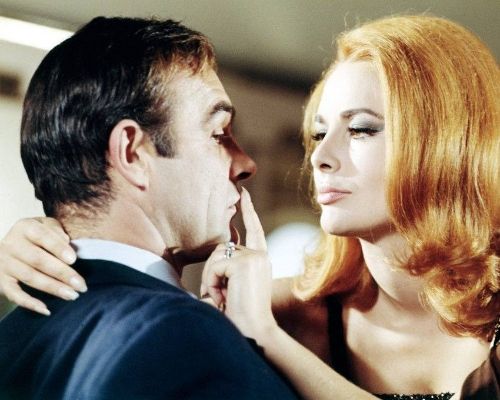
The Hawaiian actor that Bond fights in Osato’s office, Peter Maivia, is the grandfather of actor Dwayne “The Rock” Johnson.
